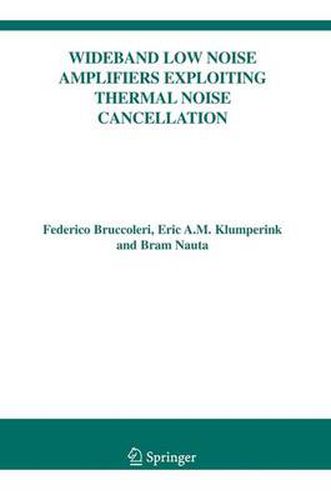Readings Newsletter
Become a Readings Member to make your shopping experience even easier.
Sign in or sign up for free!
You’re not far away from qualifying for FREE standard shipping within Australia
You’ve qualified for FREE standard shipping within Australia
The cart is loading…






This title is printed to order. This book may have been self-published. If so, we cannot guarantee the quality of the content. In the main most books will have gone through the editing process however some may not. We therefore suggest that you be aware of this before ordering this book. If in doubt check either the author or publisher’s details as we are unable to accept any returns unless they are faulty. Please contact us if you have any questions.
Low Noise Amplifiers (LNAs) are commonly used to amplify signals that are too weak for direct processing for example in radio or cable receivers. Traditionally, low noise amplifiers are implemented via tuned amplifiers, exploiting inductors and capacitors in resonating LC-circuits. This can render very low noise but only in a relatively narrow frequency band close to resonance. There is a clear trend to use more bandwidth for communication, both via cables (e.g. cable TV, internet) and wireless links (e.g. satellite links and Ultra Wideband Band). Hence wideband low-noise amplifier techniques are very much needed.
Wideband Low Noise Amplifiers Exploiting Thermal Noise Cancellation explores techniques to realize wideband amplifiers, capable of impedance matching and still achieving a low noise figure well below 3dB. This can be achieved with a new noise cancelling technique as described in this book. By using this technique, the thermal noise of the input transistor of the LNA can be cancelled while the wanted signal is amplified! The book gives a detailed analysis of this technique and presents several new amplifier circuits.
This book is directly relevant for IC designers and researchers working on integrated transceivers. Although the focus is on CMOS circuits, the techniques can just as well be applied to other IC technologies, e.g. bipolar and GaAs, and even in discrete component technologies.
$9.00 standard shipping within Australia
FREE standard shipping within Australia for orders over $100.00
Express & International shipping calculated at checkout
This title is printed to order. This book may have been self-published. If so, we cannot guarantee the quality of the content. In the main most books will have gone through the editing process however some may not. We therefore suggest that you be aware of this before ordering this book. If in doubt check either the author or publisher’s details as we are unable to accept any returns unless they are faulty. Please contact us if you have any questions.
Low Noise Amplifiers (LNAs) are commonly used to amplify signals that are too weak for direct processing for example in radio or cable receivers. Traditionally, low noise amplifiers are implemented via tuned amplifiers, exploiting inductors and capacitors in resonating LC-circuits. This can render very low noise but only in a relatively narrow frequency band close to resonance. There is a clear trend to use more bandwidth for communication, both via cables (e.g. cable TV, internet) and wireless links (e.g. satellite links and Ultra Wideband Band). Hence wideband low-noise amplifier techniques are very much needed.
Wideband Low Noise Amplifiers Exploiting Thermal Noise Cancellation explores techniques to realize wideband amplifiers, capable of impedance matching and still achieving a low noise figure well below 3dB. This can be achieved with a new noise cancelling technique as described in this book. By using this technique, the thermal noise of the input transistor of the LNA can be cancelled while the wanted signal is amplified! The book gives a detailed analysis of this technique and presents several new amplifier circuits.
This book is directly relevant for IC designers and researchers working on integrated transceivers. Although the focus is on CMOS circuits, the techniques can just as well be applied to other IC technologies, e.g. bipolar and GaAs, and even in discrete component technologies.